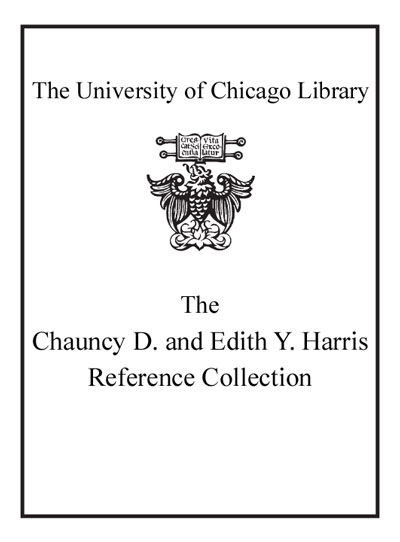CRC standard probability and statistics tables and formulae /
Saved in:
| Author / Creator: | Zwillinger, Daniel, 1957- |
|---|---|
| Imprint: | Boca Raton : Chapman & Hall/CRC, c2000. |
| Description: | 554 p. : ill. ; 25 cm. |
| Language: | English |
| Subject: | |
| Format: | Print Book |
| URL for this record: | http://pi.lib.uchicago.edu/1001/cat/bib/4315227 |
Table of Contents:
- 1. Introduction
- 1.1. Background
- 1.2. Data sets
- 1.3. References
- 2. Summarizing Data
- 2.1. Tabular and graphical procedures
- 2.2. Numerical summary measures
- 3. Probability
- 3.1. Algebra of sets
- 3.2. Combinatorial methods
- 3.3. Probability
- 3.4. Random variables
- 3.5. Mathematical expectation
- 3.6. Multivariate distributions
- 3.7. Inequalities
- 4. Functions of Random Variables
- 4.1. Finding the probability distribution
- 4.2. Sums of random variables
- 4.3. Sampling distributions
- 4.4. Finite population
- 4.5. Theorems
- 4.6. Order statistics
- 4.7. Range and studentized range
- 5. Discrete Probability Distributions
- 5.1. Bernoulli distribution
- 5.2. Beta binomial distribution
- 5.3. Beta Pascal distribution
- 5.4. Binomial distribution
- 5.5. Geometric distribution
- 5.6. Hypergeometric distribution
- 5.7. Multinomial distribution
- 5.8. Negative binomial distribution
- 5.9. Poisson distribution
- 5.10. Rectangular (discrete uniform) distribution
- 6. Continuous Probability Distributions
- 6.1. Arcsin distribution
- 6.2. Beta distribution
- 6.3. Cauchy distribution
- 6.4. Chi-square distribution
- 6.5. Erlang distribution
- 6.6. Exponential distribution
- 6.7. Extreme-value distribution
- 6.8. F distribution
- 6.9. Gamma distribution
- 6.10. Half-normal distribution
- 6.11. Inverse Gaussian (Wald) distribution
- 6.12. Laplace distribution
- 6.13. Logistic distribution
- 6.14. Lognormal distribution
- 6.15. Noncentral chi-square distribution
- 6.16. Noncentral F distribution
- 6.17. Noncentral t distribution
- 6.18. Normal distribution
- 6.19. Normal distribution: multivariate
- 6.20. Pareto distribution
- 6.21. Power function distribution
- 6.22. Rayleigh distribution
- 6.23. t distribution
- 6.24. Triangular distribution
- 6.25. Uniform distribution
- 6.26. Weibull distribution
- 6.27. Relationships among distributions
- 7. Standard Normal Distribution
- 7.1. Density function and related functions
- 7.2. Critical values
- 7.3. Tolerance factors for normal distributions
- 7.4. Operating characteristic curves
- 7.5. Multivariate normal distribution
- 7.6. Distribution of the correlation coefficient
- 7.7. Circular normal probabilities
- 7.8. Circular error probabilities
- 8. Estimation
- 8.1. Definitions
- 8.2. Cramer-Rao inequality
- 8.3. Theorems
- 8.4. The method of moments
- 8.5. The likelihood function
- 8.6. The method of maximum likelihood
- 8.7. Invariance property of MLEs
- 8.8. Different estimators
- 8.9. Estimators for small samples
- 8.10. Estimators for large samples
- 9. Confidence Intervals
- 9.1. Definitions
- 9.2. Common critical values
- 9.3. Sample size calculations
- 9.4. Summary of common confidence intervals
- 9.5. Confidence intervals: one sample
- 9.6. Confidence intervals: two samples
- 9.7. Finite population correction factor
- 10. Hypothesis Testing
- 10.1. Introduction
- 10.2. The Neyman-Pearson lemma
- 10.3. Likelihood ratio tests
- 10.4. Goodness of fit test
- 10.5. Contingency tables
- 10.6. Bartlett's test
- 10.7. Cochran's test
- 10.8. Number of observations required
- 10.9. Critical values for testing outliers
- 10.10. Significance test in 2 [times] 2 contingency tables
- 10.11. Determining values in Bernoulli trials
- 11. Regression Analysis
- 11.1. Simple linear regression
- 11.2. Multiple linear regression
- 11.3. Orthogonal polynomials
- 12. Analysis of Variance
- 12.1. One-way anova
- 12.2. Two-way anova
- 12.3. Three-factor experiments
- 12.4. Manova
- 12.5. Factor analysis
- 12.6. Latin square design
- 13. Experimental Design
- 13.1. Latin squares
- 13.2. Graeco-Latin squares
- 13.3. Block designs
- 13.4. Factorial experimentation: 2 factors
- 13.5. 2[superscript r] Factorial experiments
- 13.6. Confounding in 2[superscript n] factorial experiments
- 13.7. Tables for design of experiments
- 13.8. References
- 14. Nonparametric Statistics
- 14.1. Friedman test for randomized block design
- 14.2. Kendall's rank correlation coefficient
- 14.3. Kolmogorov-Smirnoff tests
- 14.4. Kruskal-Wallis test
- 14.5. The runs test
- 14.6. The sign test
- 14.7. Spearman's rank correlation coefficient
- 14.8. Wilcoxon matched-pairs signed-ranks test
- 14.9. Wilcoxon rank-sum (Mann-Whitney) test
- 14.10. Wilcoxon signed-rank test
- 15. Quality Control and Risk Analysis
- 15.1. Quality assurance
- 15.2. Acceptance sampling
- 15.3. Reliability
- 15.4. Risk analysis and decision rules
- 16. General Linear Models
- 16.1. Notation
- 16.2. The general linear model
- 16.3. Summary of rules for matrix operations
- 16.4. Quadratic forms
- 16.5. General linear hypothesis of full rank
- 16.6. General linear model of less than full rank
- 17. Miscellaneous Topics
- 17.1. Geometric probability
- 17.2. Information and communication theory
- 17.3. Kalman filtering
- 17.4. Large deviations (theory of rare events)
- 17.5. Markov chains
- 17.6. Martingales
- 17.7. Measure theoretical probability
- 17.8. Monte Carlo integration techniques
- 17.9. Queuing theory
- 17.10. Random matrix eigenvalues
- 17.11. Random number generation
- 17.12. Resampling methods
- 17.13. Self-similar processes
- 17.14. Signal processing
- 17.15. Stochastic calculus
- 17.16. Classic and interesting problems
- 17.17. Electronic resources
- 17.18. Tables
- 18. Special Functions
- 18.1. Bessel functions
- 18.2. Beta function
- 18.3. Ceiling and floor functions
- 18.4. Delta function
- 18.5. Error functions
- 18.6. Exponential function
- 18.7. Factorials and Pochhammer's symbol
- 18.8. Gamma function
- 18.9. Hypergeometric functions
- 18.10. Logarithmic functions
- 18.11. Partitions
- 18.12. Signum function
- 18.13. Stirling numbers
- 18.14. Sums of powers of integers
- 18.15. Tables of orthogonal polynomials
- 18.16. References
- Notation
- Index

